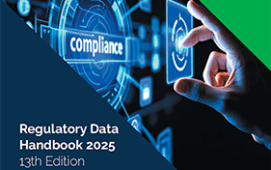Nasdaq OMX is challenging regulatory data management requirements with a cloud platform powered by Amazon Web Services (AWS) and tailored by Nasdaq OMX to provide secure and scalable data storage that cuts the cost of existing internal and external storage options.
Called FinQloud, the cloud platform initially offers two regulatory solutions for US financial firms, but more are planned along with the extension of the offering to additional geographic regions.
While AWS has worked with individual customers such as large banks and hedge funds in the financial services sector for some years, including Nasdaq OMX that over the past five years has delivered its Market Replay service from the AWS cloud, FinQloud is a broad industry initiative designed for all financial firms seeking high-volume, low-cost solutions to regulated data storage and retrieval in place of solutions such as write once read many times (Worm) drives.
FinQloud combines a cloud platform from AWS with regulatory security requirements and data integrity provided by Nasdaq OMX. The point of access to the cloud is at Nasdaq OMX’s data centre in Carteret, New Jersey, where the company keeps keys for data encryption and decryption, and runs applications that access data in the cloud.
The initial applications cover Regulatory Records Retention (R3) and Self Service Reporting (SSR). R3 is available on a regulatory mandated 90-day waiting period and allows broker-dealers to store and retrieve data in line with the US Securities and Exchange Commission rule requiring data to be kept for between 18 months and seven years. SSR is available to use immediately and allows broker-dealers to perform on-demand analysis and reporting on their stored trade data.
Ted Myerson, global head of access services at Nasdaq OMX, expects R3 to save users money in three ways. He explains: “The cloud’s economies of scale versus Worm drives will provide data storage cost savings of 50% to 80%, that’s a tier one level of savings. Tier two savings come from eliminating the need for duplicated data on site when using Worm drives offsite. Tier three savings come from avoiding an exponential increase in data casts as data is constantly added to existing data. To avoid this, R3 has been designed to keep live data, but retire it when it expires, thus keeping a fairly level volume of data in storage.”
Gary Lafever, chief corporate development officer at Nasdaq OMX, says additional regulatory data management applications will be added to the cloud solution and will cover CFTC regulations, Dodd-Frank requirements, rules covering bank requirements to store data and more.
“Our first focus is the US market where there is the largest amount of data,” he says. “But with AWS’ global presence and Nasdaq OMS’ reach, FinQloud will be extended to meet regulatory requirements for data management in other regions and will support the many global financial firms that by their very nature work in regions beyond the US.”
FinQloud has been set up as a members-only cloud, with qualifying members required to prove they are participants in financial markets. Payment to use FinQloud is based on a data storage volume per month basis.
Adam Selipsky, vice president of AWS, says FinQloud is being used by one proof of concept customer, a mid-sized clearing house that is using the SSR application and working towards using the R3 regulatory storage and retrieval solution.
He suggests more clients are in the pipeline: “Firms from large broker-dealers to small hedge funds can leverage FinQloud. Regulation is increasing, data is increasing; this solution will dramatically lower costs and simplify data storage, giving firms time to focus on business values. The technology integration of FinQloud is deeper than anything that has been done before and provides the robust security model of AWS plus layers of security and compliance developed by Nasdaq OMX for financial services firms.”
Subscribe to our newsletter




